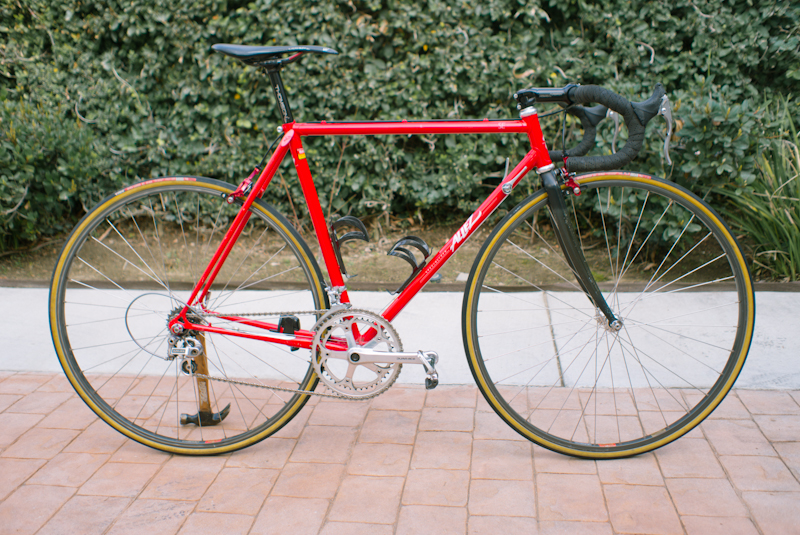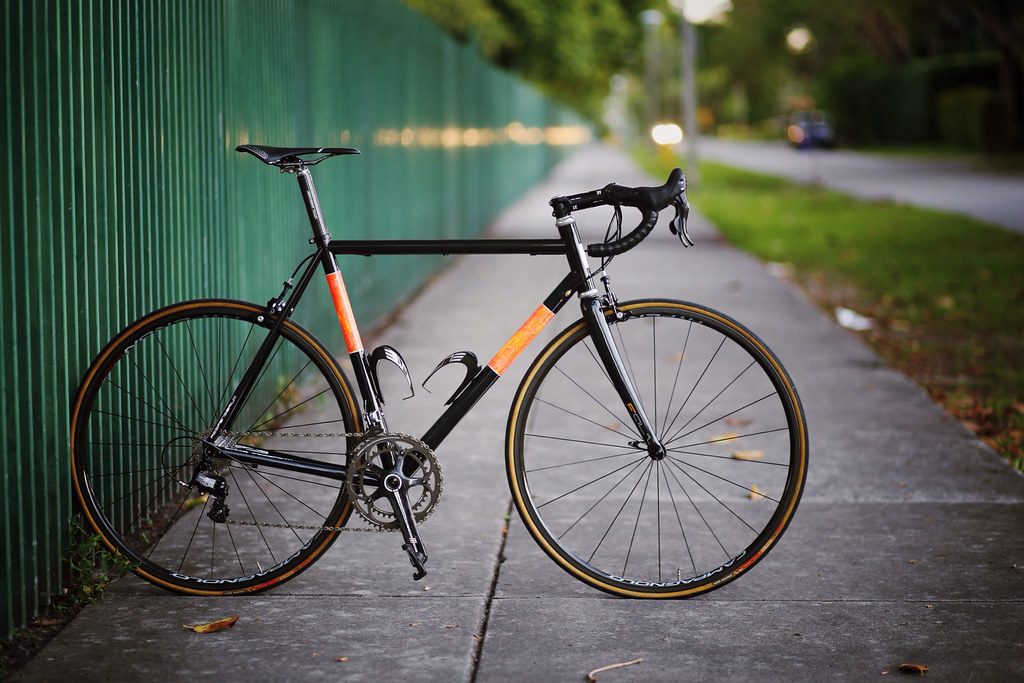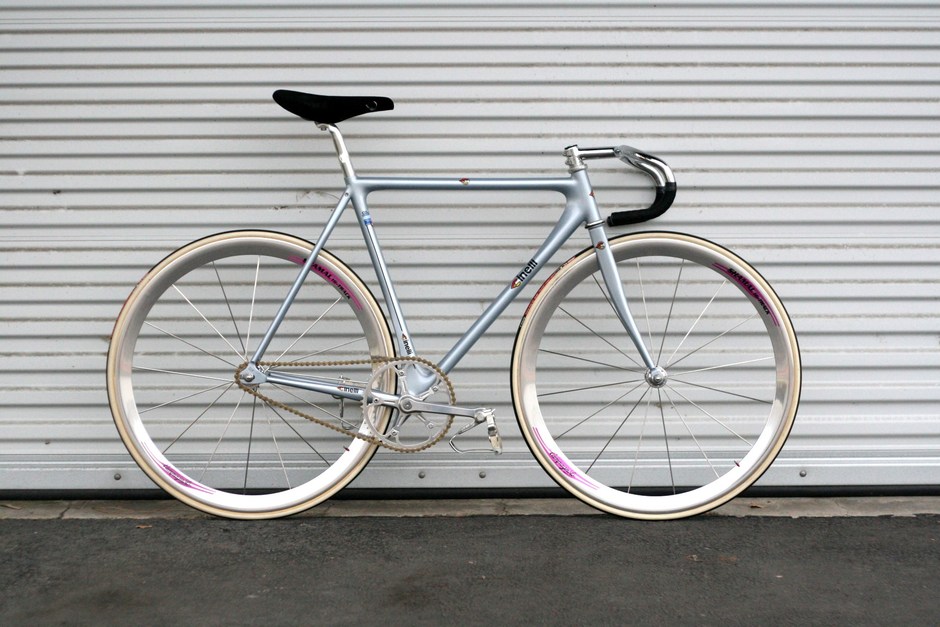-
-
-
From anti...
:op
And it should stay in anti because that bike is a late nineties mid-range aluminium bike with a non-professional groupset and non-Paris Roubaix wheels and tires to which somebody added a Rock Shox fork.long after these forks were used by the pros. It has absolutely nothing to do with Paris-Roubaix.
Following the introduction of the Rock Shox Road fork by Greg Lemond and Gilbert Duclos Lassalle and the victory of the latter in 1992, Bianchi, like most other manufacturers, started to experiment with suspention too. In 1993 Franco Ballerini used a Allsop Softride stem with elastomere suspensionin his steel Bianchi frame and rode it to a second place behind Duclos Lassalle (who scored his second win with a Rock Shox equipped bike) and in 1994 Bianchi headed to Roubaix with several bikes equipped with Rock Shox forks, including Museeuws fully (which he ditched in the race final while Tschmil rode to victory with a Rock Shox equipped steel "Caloi" Merckx). After that Bianchi kept experimenting with titanium framed Rock Shox equipped bikes untill 1996 when suspension disappeared from the peloton as quickly as it came, because riders realized that the extra comfort on the 55km of cobble stones did not compensate the loss of stiffness and the weight penalty on the 200km of tarmac. From 1995 till 2014 Paris-Roubaix was won with bikes without suspension forks.
-
That's an interesting bike, very typical for its time. Late nineties experiments with suspension forks on road bikes for Paris Roubaix. Wouldn't call it anti.
Typical for its time? This bike has absolutely nothing to do with Paris-Roubaix or experiments.
Following the introduction of the Rock Shox Road fork by Greg Lemond and Gilbert Duclos Lassalle and the victory of the latter in 1992, Bianchi, like most other manufacturers, started to experiment with suspention too. In 1993 Franco Ballerini used a Allsop Softride stem with elastomere suspensionin his steel Bianchi frame and rode it to a second place behind Duclos Lassalle (who scored his second win with a Rock Shox equipped bike) and in 1994 Bianchi headed to Roubaix with several bikes equipped with Rock Shox forks, including Museeuws fully (which he ditched in the race final while Tschmil rode to victory with a Rock Shox equipped steel "Caloi" Merckx). After that Bianchi kept experimenting with titanium framed Rock Shox equipped bikes untill 1996 when suspension disappeared from the peloton as quickly as it came, because riders realized that the extra comfort on the 55km of cobble stones did not compensate the loss of stiffness and the weight penalty on the 200km of tarmac. From 1995 till 2014 Paris-Roubaix was won with bikes without suspension forks.The bike in the picture is a late nineties mid-range aluminium bike with a non-professional groupset and non-Paris Roubaix wheels and tires to which somebody added a Rock Shox fork.long after these forks were used by the pros.
-
yes, bit narcissistic that
got a reply from the "laser" vendor
Is in Flemish, but he's in Dublin with the bike frame
strange
"Hallo,Ik verhuisde met mijn baan in Dublin, Ierland. als u wilt komen om het te inspecteren en te kopen, zul je mijn gast zijn, anders kunnen we een oplossing met betrekking tot het vervoer te vinden. met vriendelijke groet"
sounds like a fuck goat to me
There are so many errors in that text, no doubt a quick translation with babelfish or similar because no way this guy really speaks Dutch/Flemish
-
-
-
-
anyone know the rims on the merckx up there? ^^
NOS Mavic Reflex Ceramic tubular rims laced to White Industries T11 hubs
http://weightweenies.starbike.com/forum/viewtopic.php?f=10&t=122963
-

More: http://www.pedalroom.com/bike/1987-specialized-allez-se-16103
Needs a matching fork
-
The Koga Miyata was the Halfords bike of its day, you know, the one your Dad bought you for Xmas instead of a proper bike!
Nonsense, in the 1980's and 1990's Koga-Miyata marketed everything from entry level models to some of the most exclusive bikes available, including early carbonfibre and titanium models
Dunno what your dad picked up at Halfords for you, but for sure it had no titanium frame, full Dura-Ace and titanium Araya rims...

-
-
-
-
-
-
-
-
-
-
-
I was just going to say that. Will wear the anodizing off in a month
http://velospace.org/node/45139#comment-111743
Submitted by Fabianinduplo on 12/05/2012. I just love the look of the Pistas. Since this is an all Italian (except for the French pedals...) single speed it is the perfect wheelset. Plus: super solid and stiff and if you use the black Swisstops the black won't wear off the braking surface. Braking quality is fine, too.
Needless to say that you could get far lighter wheelsets, this set is 2.1 kg without tubulars and track nuts. Doesn't matter though, this bike is not about being lightweight.Submitted by Ruimteaapje on 05/17/2013.
Most curious about the state of your Pista wheelset one year later. Did the swissstop rubber really save them from brake wear?Submitted by Fabianinduplo on 05/19/2013.
Yep, you can also use the standard Campagnolo Brake Pads. The rims are still as black as new.
LFGSS
London Fixed Gear and Single-Speed is a community of predominantly fixed gear and single-speed cyclists in and around London, UK.
This site is supported almost exclusively by donations. Please consider donating a small amount regularly.









I think apart from the frame itself none of these parts existed in 1993, apart from the handlebars and with a possible exception for the rims (did Mavic do ceramic coated Open Pros in 93?).
I bought the fork and stem in 2007 when I build up my first rendition of this bike, which was quite different from its new looks. These handlebars have been chosen to provide a platform for lights and a GoPro camera as it is my long distance bike.